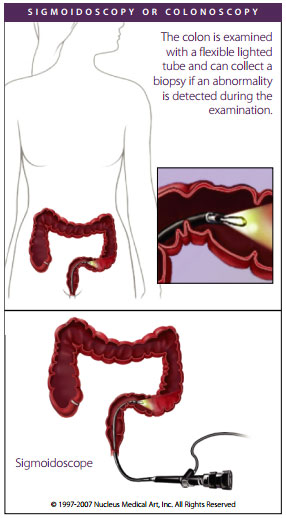
Colonoscopy Preparation Instructions
Split Preps
- Clenpiq Split Prep
- Golytely Split Prep
- Plenvu Split Prep
- Suprep Split Prep
- Su-Tab Split Prep
- SUFLAVE Split Prep
Instrucciones en español
What Is a Colonoscopy?
A colonoscopy allows a doctor to look inside the entire large intestine. The procedure enables the physician to see things such as inflamed tissue, abnormal growths, and ulcers. It is most often used to look for early signs of cancer in the colon and rectum. It is also used to look for causes of unexplained changes in bowel habits and to evaluate symptoms like abdominal pain, rectal bleeding, and weightloss.
What Is The Colon?
The colon, or large bowel, is the last portion of your digestive tract, or gastrointestinal tract. The colon is a hollow tube that starts at the end of the small intestine and ends at the rectum and anus. The colon is about 5 feet long, and its main function is to store unabsorbed food waste and absorb water and other body fluids before the waste is eliminated as stool.
Preparation
You will be given instructions in advance that will explain what you need to do to prepare for your colonoscopy. Your colon must be completely empty for the colonoscopy to be thorough and safe. To prepare for the procedure you will have to follow a liquid diet for 1 to 3 days beforehand.The liquid diet should be clear and not contain food colorings, and may include:
- fat-free bouillon or broth
- strained fruit juice
- water
- plain coffee
- plain tea
- diet soda
- gelatin
Cleansing of the bowel is necessary before a colonoscopy. You will likely be asked to take a laxative the night before the procedure. In some cases you may be asked to give yourself an enema. An enema is performed by inserting a bottle with water and sometimes a mild soap in your anus to clean out the bowels. Inform your doctor of any medical conditions you have or medications you take on a regular basis such as aspirin, arthritis medications, blood thinners, diabetes medication, and vitamins that contain iron.
The medical staff will also want to know if you have heart disease, lung disease, or any medical condition that may need special attention. You must also arrange for someone to take you home afterward, because you will not be allowed to drive after being sedated.
Procedure
For the colonoscopy, you will lie on your left side on the examining table. You will be given pain medication and a moderate sedative to keep you comfortable and help you relax during the exam. The doctor and a nurse will monitor your vital signs, look for any signs of discomfort, and make adjustments as needed.
The doctor will then insert a long, flexible, lighted tube into your rectum and slowly guide it into your colon. The tube is called a colonoscope.The scope transmits an image of the inside of the colon onto a video screen so the doctor can carefully examine the lining of the colon. The scope bends so the doctor can move it around the curves of your colon.
You may be asked to change positions at times so the doctor can more easily move the scope to better see the different parts of your colon.The scope blows air into your colon and inflates it,which helps give the doctor a better view. Most patients do not remember the procedure afterwards.
The doctor can remove most abnormal growths in your colon, like a polyp, which is a growth in the lining of the bowel. Polyps are removed using tiny tools passed through the scope. Most polyps are not cancerous, but they could turn into cancer. Just looking at a polyp is not enough to tell if it is cancerous.The polyps are sent to a lab for testing. By identifying and removing polyps, a colonoscopy likely prevents most cancers from forming.
The doctor can also remove tissue samples to test in the lab for diseases of the colon (biopsy). In addition, if any bleeding occurs in the colon, the doctor can pass a laser, heater probe, electrical probe, or special medicines through the scope to stop the bleeding. The tissue removal and treatments to stop bleeding usually do not cause pain. In many cases, a colonoscopy allows for accurate diagnosis and treatment of colon abnormalities without the need for a major operation.
During the procedure you may feel mild cramping. You can reduce the cramping by taking several slow, deep breaths. When the doctor has finished, the colonoscope is slowly withdrawn while the lining of your bowel is carefully examined. Bleeding and puncture of the colon are possible but uncommon complications of a colonoscopy.
A colonoscopy usually takes 30 to 60 minutes. The sedative and pain medicine should keep you from feeling much discomfort during the exam. You may feel some cramping or the sensation of having gas after the procedure is completed, but it usually stops within an hour. You will need to remain at the colonoscopy facility for 1 to 2 hours so the sedative can wear off.
Rarely, some people experience severe abdominal pain, fever, bloody bowel movements, dizziness, or weakness afterward. If you have any of these side effects, contact your physician immediately. Read your discharge instructions carefully. Medications such as blood-thinners may need to be stopped for a short time after having your colonoscopy, especially if a biopsy was performed or polyps were removed. Full recovery by the next day is normal and expected and you may return to your regular activities.
Additional Resources
American College of Gastroenterology
email: info@acg.gi.org
www.acg.gi.org
International Foundation for Functional Gastrointestinal Disorders
email: if gd@iffgd.org
Internet: www.iffgd.org
Content provided by the National Digestive Diseases Information Clearinghouse (NDDIC), a service of the National Institute of Diabetes and Digestive and Kidney Diseases (NIDDK). This material is intended for patient education and information only. It does not constitute advice, nor should it be taken to suggest or replace professional medical care from your physician.Your treatment options may vary, depending upon medical history and current condition. Only your physician and you can determine your best option. Provided to you as a service by CarisDiagnostics, Inc. ©2008 CarisDiagnostics, Inc. All rights reserved. (01.08)

